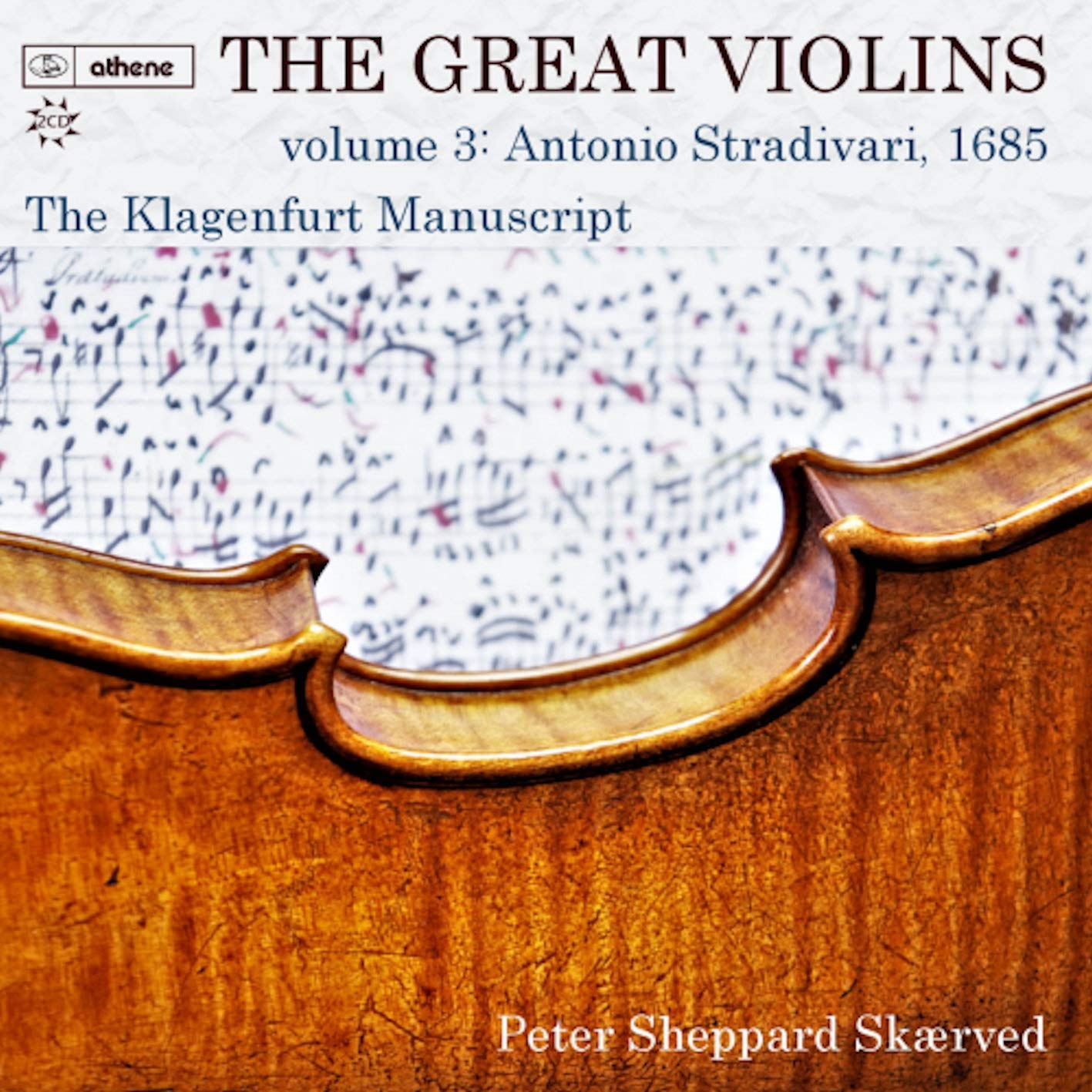The Klagenfurt Manuscript
Peter Sheppard Skærved, Antonio Stradivari 1685
142:10 (2 CDs in a single jewel case)
athene ath 23206
Click HERE to buy this on amazon.co.uk
This series of CDs from athene each features a famous violin on which Peter Sheppard Skaerved plays appropriate repertoire, and the present double album features a 1685 Stradivari ‘violino piccolo’. The music seems to be a pet project of Skaerved’s, a manuscript from the mid-1680s of music for solo violin housed in the Landesmuseum Kärnten, Klagenfurt. Having worked with and performed the music for a number of years, Skaerved is able to talk with considerable authority about it in an extensive and intriguing programme note, and to speculate with a high degree of certainty as to its provenance. He is of the opinion that it is probably the work of one of the Benedictine nuns in the Convent of St Georgen am Längsee in Kärnten. The manuscript is notable for its extensive use of various scordatura permutations of tuning, and Skaerved speculates that his chosen Stradivari violin (from the collection in the Royal Northern School of Music in Manchester) was of smaller size not to play routinely higher (as in Bach first Brandenburg Concerto) but to be able to cope better with a variety of different scordature as in the present manuscript. His experience of playing this music on this violin has also suggested to him that the primary aim of the different scordature may not have been technical ease but the quest for different sonorities. Bearing in mind his speculation that this music is the work of a practising nun, we should also bear in mind the apparent religious significance of different tunings in the parallel work of Biber. As there is no attempt in the manuscript to group the mainly short dance movements into suites, Skaerved simply plays them in order, pointing out that with digital technology it is easy for a listener to construct their own suites if they wish! Perhaps unsurprisingly given its probable context, this is not amongst the showiest of this type of music for solo violin – this is probably music for the enjoyment of the player and possibly for a small select audience, in contrast to the music of the travelling violin virtuosi of this period, designed to stun and impress with its technical fireworks. Appropriately, Skareved’s Stradivari instrument produces a delicate if slightly shallow sound, but his intelligent readings and lyrical interpretations of these pieces make for rewarding listening.
D. James Ross
